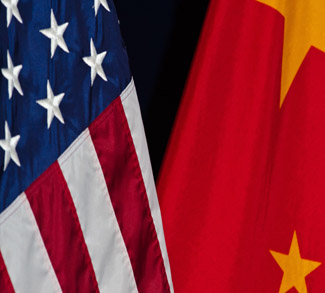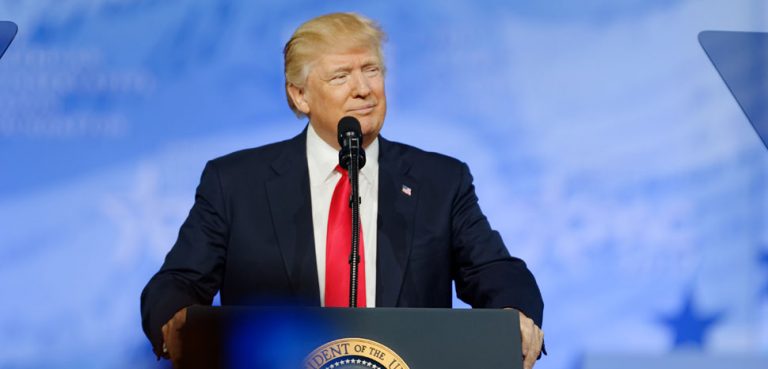The Alaska LNG project, a long-delayed initiative to transport natural gas from the resource-rich US state of Alaska to global markets, has reemerged from the political wilderness following an agreement signed last month by the Alaska Gasline Development Corporation and the Glenfarne Group, a New York-based infrastructure developer.
Furthermore, an executive order issued by the Trump administration has added significant heft to the project’s viability by removing costly federal barriers to the project. The Trump administration’s reintroduction of tariffs targeting key US allies, including Japan and South Korea, has led both nations to reconsider their previously tepid view of Alaskan LNG as a potential concession to Washington in exchange for tariff relief.
The project, estimated at $44 billion, involves constructing an 800-mile pipeline to transport natural gas from Alaska’s North Slope to a liquefaction facility. Once operational, it could provide up to 20 million metric tons of liquefied natural gas (LNG) annually, with Japan and South Korea as primary customers. The project also touts local job creation, infrastructure investment, and long-term state revenues for Alaska.
Beyond its economic appeal, Alaska’s gas is of considerable use for furthering US geopolitical goals. US allies in Asia seeking to reduce dependence on Russian and Qatari LNG have limited options due to geography and sanctions. Once operational, the Alaska LNG would offer another avenue of import diversification. However, the venture still needs to overcome doubts over its profitability in order to secure private investment, namely stemming from its projected high overhead costs and competition from cheaper LNG sources in the Gulf of Mexico, Qatar, and Australia.
The Winding History of Alaska LNG
Efforts to develop Alaska’s natural gas reserves date back to the completion of the Trans-Alaska Pipeline System (TAPS) in 1977, though various proposals have been stalled by fluctuating energy prices, lack of buyers, and high infrastructure costs. The project gained traction under the first iteration of the Trump administration in 2017, which sought to prioritize US LNG exports. The Federal Energy Regulatory Commission (FERC) approved the project in 2020, and despite overcoming legal challenges in court, the project was de-prioritized by the Biden administration due to environmental concerns.
The effects of the executive order signed by Trump last month include accelerating resource development, expediting permitting and investment incentives while rolling back regulations. Despite this support, realizing the potential of the Alaska LNG project will require diplomatic support from the two largest prospective buyers of the gas: South Korea and Japan. Alaska’s US Senator Dan Sullivan visited Tokyo and Seoul in 2022, 2023, and 2024 as part of an effort to gauge interest and support for the project, which was initially tepid among South Korean and Japanese officials but appears to have shifted amid the threat of US tariffs.
Searching for Diversified LNG Imports in the Indo-Pacific
Japan and South Korea, both major LNG importers, have been reassessing their energy security since the 2022 Russian invasion of Ukraine. Russia has expanded its Arctic LNG projects despite Western sanctions, which have struggled to disrupt German demand for Russian gas. Japan, which has already pared its involvement with Russia’s Sakhalin-2 gas fields, remains exposed to geopolitical risk stemming from its Russian supply lines, which provided 9% of its LNG imports last year.
Tokyo has indicated an intent to reduce this reliance on Russian energy even further. South Korea has voluntarily slashed imports of Russian natural gas, even without the adoption of sanctions on Russia, with most of Seoul’s LNG now coming from Australia, Qatar, and the United States. In tandem with its reduction of Russian gas, South Korean companies have diversified through an increase in imports from Malaysia and Oman, among others.
Recent reports suggest Japan is considering an investment pledge in the Alaska LNG project as a bargaining chip in broader trade negotiations, even though Tokyo still has reservations about the venture ever being realized. Nevertheless, while concerns over cost competitiveness persist, the need for a stable North American supply source keeps the project in play.
Qatar remains a dominant LNG supplier with the 3rd largest export capacity globally, but many Asian buyers seek diversification amid Qatar’s complicated role in regional geopolitics. Furthermore, significant capex spending planned by Qatar is expected to expand Qatari LNG export volumes by up to 85% by 2027, potentially saturating the market and forcing the United States to compete on smaller margins. Yet it’s enduring geopolitical concerns that may push Japan and South Korea to support alternative sources like Alaskan LNG, even at higher initial costs, as a way to diversify imports and mitigate the impact of any potential US tariffs.
Beyond Japan and South Korea, Alaskan LNG is well-positioned to expand market share in other key Indo-Pacific nations seeking to diversify their energy imports. The Philippines is experiencing declines in its offshore gas production and is eager to transition away from coal, representing a viable future market once construction of regasification facilities are complete.
Additionally, Thailand and Vietnam, both of whom mirror the Philippines in expanding LNG regasification facilities, are potential customers looking for reliable North American gas sources to offset dependence on regional suppliers. Taiwan, heavily dependent on LNG for its electricity sector, is another buyer seeking stable, long-term contracts, though such a move would prompt criticism by China. These markets align with the broader US Indo-Pacific strategy of strengthening economic and energy ties while countering Chinese influence in the region.
Conclusion
The Alaska LNG pipeline is more expensive than other alternatives due to its remote location, frigid climate, and expensive overhead associated with its construction. The 800-mile pipeline must traverse harsh Arctic terrain, requiring costly engineering solutions to prevent permafrost damage, among other challenges.
Unlike facilities in the US states of Texas and Louisiana, the Alaska LNG project would require entirely new liquefaction and export terminals, further driving up start-up costs. Additionally, labor and material expenses are significantly higher in Alaska compared to Texas and Louisiana due to its isolated geography.
Thus, despite the recent political backing, securing investment for the Alaska LNG project remains a challenge. The $44 billion price tag makes it one of the most expensive LNG projects globally. Japan and South Korea’s interest in reducing reliance on Russian and Qatari LNG adds a sense of urgency. Yet the economic argument for the project still has several critics to win over. Whether this revived push by the Trump administration and Alaskan state leaders results in construction remains uncertain, but the project’s implications for US energy security and its influence in the Indo-Pacific would be significant.




